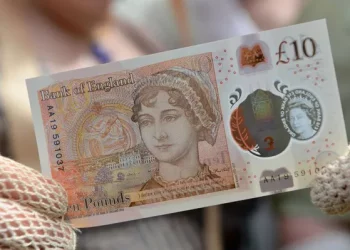Announced it would cut the reserve requirement ratio for financial institutions by 0.5 percentage points on December 15, 2021, freeing up liquidity of about 1.2 trillion yuan.
What impact will it have on the market?
First, we consider the need for an across-the-board RRR cut.
The main reason is that there will be an MLF in December, about 950 billion.
The amount of money is large.
Even if the central bank does not cut the reserve requirement ratio, it must find a way to offset this liquidity pair.
Now, the situation is that almost the amount of RRR released in a single cut, equivalent to the amount released in the regular MLF, becomes an RRR cut with no maturity.
Only then will the intention to support the economy become clearer.
Second, right now, the bank’s net interest margin has reached historically very low levels, as we have seen the bank’s share price have been falling, reflecting this.
The banks are now at an impasse.
But you can’t raise lending now, then the real economy will be even worse, the only way is to cut interest rates and reserve requirements, and open up the space below, let the banks recover, and the side effects of interest rate cuts are very big, so they instinctively choose to cut reserve requirements to release more liquidity.
Third, interest rates will rise next year.
In the meantime, we need to push the economy into a recovery cycle to effectively fend off market risks.
So as not to cause large cross-border capital outflows.
The overall economic situation is not optimistic next year, so it is necessary to start ahead of schedule.
Fourth, the end of the year is an important meeting, which is in line with the tone of economic stability.
We have long judged that there will be policy changes by the end of the year, and it is reasonable to cut the reserve requirement ratio across the board.
Cutting the RRR now will help prepare for next year’s economic stimulus and advance the issuance of government bonds, which will play a key role in maintaining economic stability in the first half of next year.
So what impact will an across-the-board RRR cut have on the market?
First, it is good for the banks.
As I said, the main business model for banks is net interest margins, and net interest margins are historically very low, so expectations are very low.
Now we are lowering the reserve requirement ratio and opening up the net interest margin, which will help raise the profit expectations of banks.
The worst, it should be said, is over for banks.
Second, it benefits the securities and insurance industries, stimulating the economy and raising the value of equity assets.
Due to the low shareholding ratio in the financial sector, the asset condition of banks has improved, and the asset surface of securities insurance companies will gradually improve.
Third, it is conducive to infrastructure construction and countercyclical adjustment.
It must boost infrastructure.
In fact, infrastructure construction has already begun to show.
At present, market valuations for infrastructure construction are low and future investment opportunities are more certain.
In the future, there will be corresponding policies to promote the fourth, conducive to real estate.
The latest tone is to promote the construction of affordable housing, support the commercial housing market, better meet the reasonable housing demand of buyers, promote the healthy development and virtuous cycle of the real estate industry, and the future policy will focus on continuation, that is, there will be no more stringent policy to gradually ease the expected pressure.
Then, in terms of loan support, it will also be slightly relaxed to support rigid demand for new homes and first homes, with due consideration for improving demand.
The worst of the housing gloom is largely over.
However, it is unrealistic to dream of another real estate boom.
We should understand the intention of the policy. The purpose of anti-inflation is to prevent inflation from falling.
If it goes up again, it’s hard to make a smooth landing.
So now we have to use time to change space to gradually digest the housing bubble.
Have made it clear that the overall, policy, but I’m worried about the market won‘t be so quick to, because there is a mood transfer process, at the bottom of the policy is often higher than market bottom, so I think the market will have a structural adjustment phase, and the long-term funds will gradually from the new energy and photovoltaic hotspot in fields such as overflow, gradually return to defense in the field of financial and real estate is undervalued.
Next year, corporate profits will start to fall and high-boom industries will be hard to sustain, so more and more money will be spent on defense.
This may be a bit similar to the market in 2016.
The index is rising, but most investors are losing money.
So be optimistic about the market next year, but the investment style should be balanced and slightly biased towards value.
The Fed may step on the accelerator as global central bank resolutions come thick and fast.
Please pay attention to the specific operation, the market is changing rapidly, investment needs to be cautious, the operation strategy is for reference only.

























